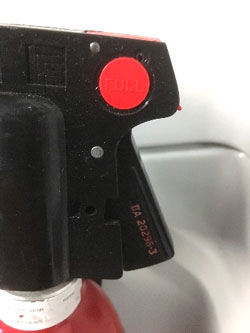What is the life cycle and warranty for FFE extinguishers?
The warranty for all our extinguishers is three years from the date of manufacture, along with shelf life of ten years, unless they have been discharged or damaged, meaning the extinguisher must be replaced.
Where can I find the latest Component Maintenance Manual, Service Bulletin, Material Safety Datasheet or Service Information Letter for my extinguisher?
We have an online library for all of our extinguisher related documents which is supported by Percival Aviation Ltd. First go to www.firecmm.com and register your email to the relevant document you’re looking for.
Once you have registered, you will receive automatic updates when the latest revision is released.
Can I return my extinguisher?
For extinguishers containing halon and non-halon products we are only registered with an export licence. We do not possess an import licence so are unable to except returns of any extinguishers outside the EU.


